Marco Crocco
Narrowband Transmit Beam Pattern in medical ultrasound: a stochastic approach to delays optimization
Sep 13, 2022
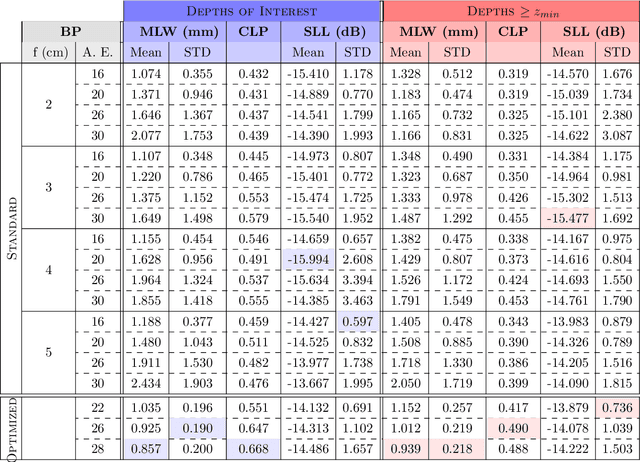
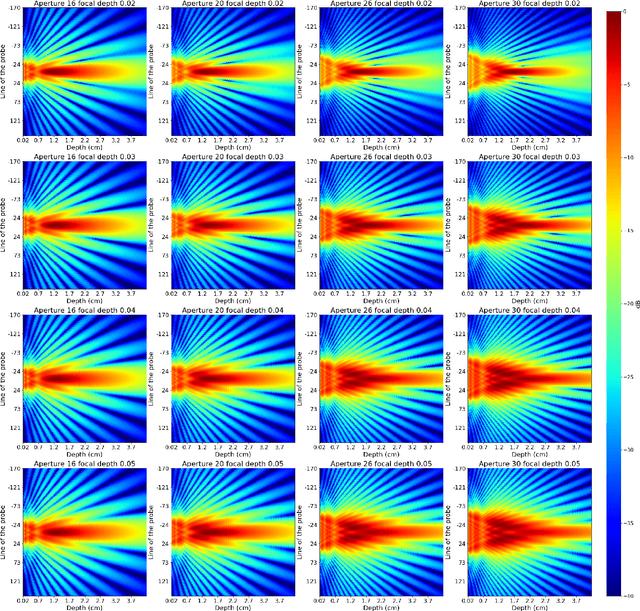

Abstract:Transmit Beam Pattern (TBP) optimization is an important task in medical ultrasound especially in some advanced applications like continuous wave Doppler or shear wave generation in acoustic radiation force impulse elastography. Standard TBP is based on transmission focused at a fixed focal depth: this results in well-known drawbacks like non-uniform beam width over depth, presence of significant side lobes and quick energy drop out after the focal depth. To overcome these limitations, in this work we present a novel optimization approach for TBP by focusing the analysis on the narrow band approximation of the TBP and considering transmit delays as free variables instead of linked to a specific focal depth. We formulate the problem as a non linear Least Squares problem to minimize the difference between the TBP corresponding to a set of delays and the desired one, modeled as a 2D rectangular shape elongated in the direction of the beam axis. The narrow band case leads naturally to reformulate the problem in the frequency domain, with a significant computational saving with respect to time domain. The optimized narrowband beam patterns have been compared with a large set of standard ones, showing an overall improvement of desired features, thus demonstrating the effectiveness of the proposed approach. Moreover, in order to allow a quantitative evaluation of the improvement, a novel set of metrics is introduced.
3D Pose from Detections
Jul 20, 2015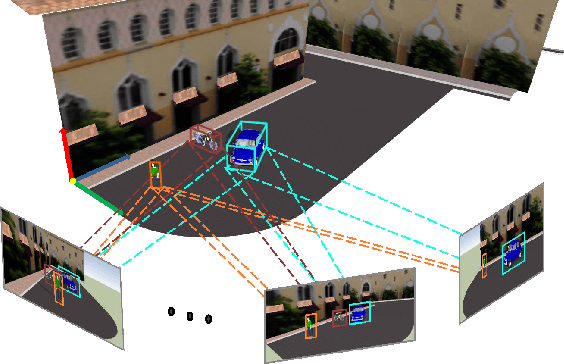

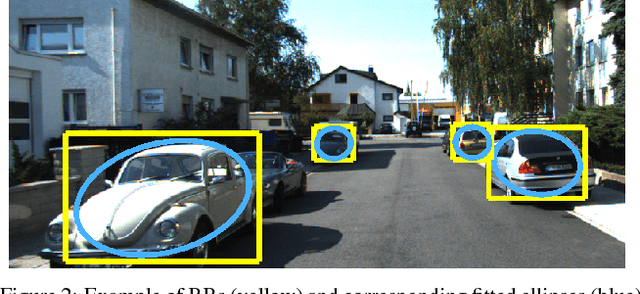
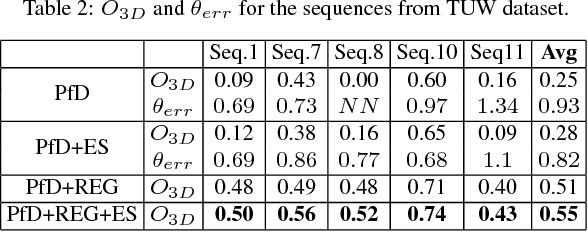
Abstract:We present a novel method to infer, in closed-form, a general 3D spatial occupancy and orientation of a collection of rigid objects given 2D image detections from a sequence of images. In particular, starting from 2D ellipses fitted to bounding boxes, this novel multi-view problem can be reformulated as the estimation of a quadric (ellipsoid) in 3D. We show that an efficient solution exists in the dual-space using a minimum of three views while a solution with two views is possible through the use of regularization. However, this algebraic solution can be negatively affected in the presence of gross inaccuracies in the bounding boxes estimation. To this end, we also propose a robust ellipse fitting algorithm able to improve performance in the presence of errors in the detected objects. Results on synthetic tests and on different real datasets, involving real challenging scenarios, demonstrate the applicability and potential of our method.
Audio Surveillance: a Systematic Review
Sep 27, 2014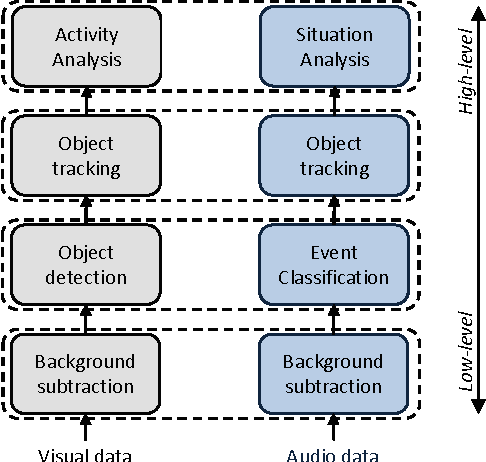
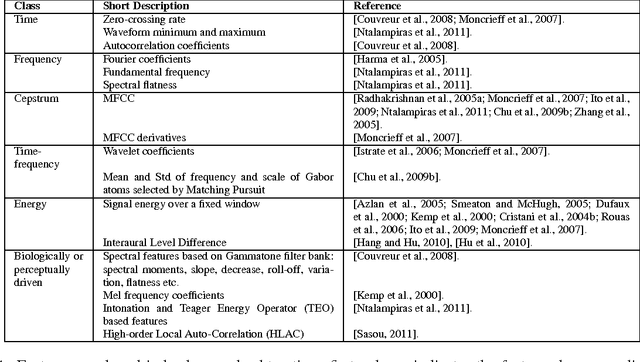
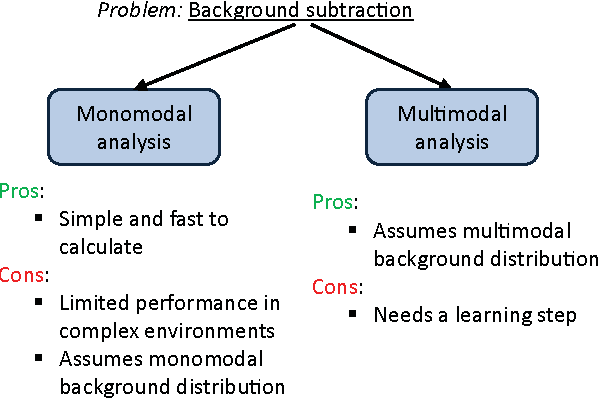

Abstract:Despite surveillance systems are becoming increasingly ubiquitous in our living environment, automated surveillance, currently based on video sensory modality and machine intelligence, lacks most of the time the robustness and reliability required in several real applications. To tackle this issue, audio sensory devices have been taken into account, both alone or in combination with video, giving birth, in the last decade, to a considerable amount of research. In this paper audio-based automated surveillance methods are organized into a comprehensive survey: a general taxonomy, inspired by the more widespread video surveillance field, is proposed in order to systematically describe the methods covering background subtraction, event classification, object tracking and situation analysis. For each of these tasks, all the significant works are reviewed, detailing their pros and cons and the context for which they have been proposed. Moreover, a specific section is devoted to audio features, discussing their expressiveness and their employment in the above described tasks. Differently, from other surveys on audio processing and analysis, the present one is specifically targeted to automated surveillance, highlighting the target applications of each described methods and providing the reader tables and schemes useful to retrieve the most suited algorithms for a specific requirement.
 Add to Chrome
Add to Chrome Add to Firefox
Add to Firefox Add to Edge
Add to Edge